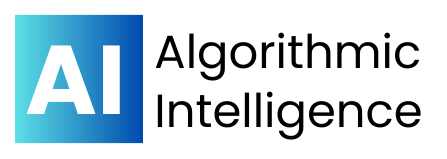The Federal Reserve is undertaking a significant review of bank capital regulations, marking a pivotal moment in U.S. financial oversight. This comprehensive examination of capital framework requirements for large banks has sparked intense debate among regulators, industry experts, and financial institutions about the future of banking regulation.
The Conference That Sparked Industry-Wide Discussion
On July 22, 2025, the Federal Reserve hosted the “Integrated Review of the Capital Framework for Large Banks Conference,” bringing together industry veterans, academics, and current and former policymakers. Fed Chair Jerome Powell emphasized the importance of considering “all elements of the capital framework in concert, rather than look at each in isolation,” highlighting the interconnected nature of modern banking regulations.
The conference represented a significant step in the Fed’s ongoing effort to reassess how banks should be capitalized and regulated. Vice Chair for Supervision Bowman initiated this comprehensive review at the outset of her term, recognizing the need for a fresh perspective on banking oversight in an evolving financial landscape.
Key Components Under Review
The Federal Reserve’s capital framework consists of four main pillars that are all subject to this integrated review. Risk-based capital requirements form the foundation, determining how much capital banks must hold based on the riskiness of their assets. Leverage requirements provide a backstop by setting minimum capital levels regardless of risk weighting.
The surcharge for the largest and most complex banks adds an additional buffer for systemically important institutions. Perhaps most notably, stress tests have become a cornerstone of post-2008 financial regulation, subjecting banks to hypothetical economic scenarios to ensure they can withstand severe downturns.
According to Chair Powell, “we have proposals outstanding or in the works across all four areas,” indicating comprehensive changes are being considered across the entire regulatory framework.
Recent Regulatory Developments
The Fed has already begun implementing changes to certain capital rules. In June 2025, the Federal Reserve unveiled plans to roll back an important capital rule that big banks have said limits their ability to hold more Treasuries and act as intermediaries in the $29 trillion market. This move represents a shift toward addressing industry concerns about regulatory constraints on market-making activities.
The Federal Reserve proposed easing a key capital rule that banks say has limited their ability to operate, demonstrating the regulator’s willingness to reconsider rules that may be hindering financial market efficiency without compromising safety.
Industry Pushback and Regulatory Response
Wall Street has been vocal in its opposition to certain proposed capital requirement increases. Banks argue that overly restrictive rules limit their ability to serve customers effectively and compete in global markets. The industry has particularly focused on rules that would increase capital requirements for trading activities and operational risk.
The regulatory response has been measured, with officials acknowledging the need to balance safety and soundness with economic efficiency. Chair Powell noted that “we need large banks to be well capitalized and to manage their key risks well. And we need large banks to be free to compete with one another, with nonbank financial firms, and with banks in other jurisdictions.”
The Path Forward
The integrated review represents more than just technical adjustments to regulatory requirements. It reflects a fundamental reassessment of how banking regulation should evolve in response to changing market conditions, technological advances, and lessons learned from recent financial stress events.
The Fed has positioned itself as “a dynamic institution” that is “open to hearing new ideas and feedback on how to improve the capital framework for large banks.” This openness suggests that the final outcome of the review may differ significantly from initial proposals, depending on stakeholder input and empirical analysis.
Implications for the Banking Sector
The outcome of this regulatory overhaul will have far-reaching implications for how large banks operate, compete, and serve their customers. Changes to capital requirements affect banks’ ability to lend, their profitability, and their role in financial markets. The integrated approach being taken by the Fed suggests that future regulations will be more holistic and better coordinated than previous piecemeal reforms.
As this review progresses, the banking industry, investors, and policymakers will be closely monitoring developments. The balance struck between financial stability and economic efficiency will shape the competitive landscape for years to come, making this one of the most significant regulatory reviews in recent memory.


